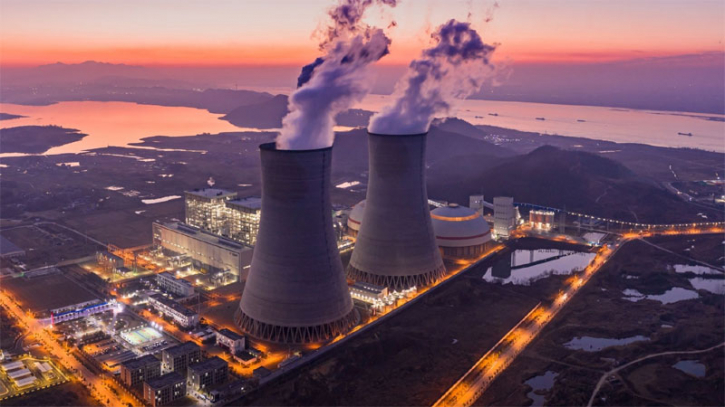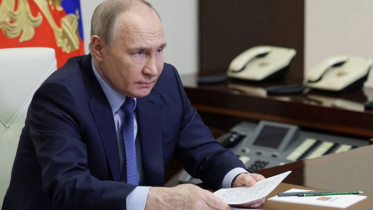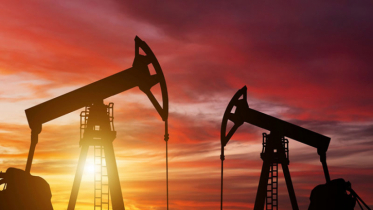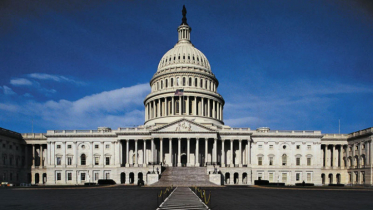Banks unwilling to finance $5tn global nuclear development

After decades of being treated as the black sheep of the energy universe, nuclear energy is enjoying a renaissance in the United States and many Western countries thanks to the global energy crisis. Back in December, at the COP28 summit, 22 countries including the US, Canada, the United Kingdom and France pledged to triple nuclear power capacity by 2050 (from 2020 levels).
Last month, 34 nations, including the United States, China, France, Britain, and Saudi Arabia, committed “to work to fully unlock the potential of nuclear energy by taking measures such as enabling conditions to support and competitively finance the lifetime extension of existing nuclear reactors, the construction of new nuclear power plants and the early deployment of advanced reactors.”
The world is begrudgingly beginning to accept that technological bottlenecks limit solar and wind energy as large-scale substitutes for fossil fuel energy. Further, we are unable to develop clean energy resources fast enough to meet the world’s climate goals while the war in Ukraine has laid bare Europe’s dependence on Russian energy.
But nuclear’s revival might be dead in the water with lenders balking at financing what they consider a high-risk sector. Last month, the International Atomic Energy Agency convened the first ever nuclear summit in Brussels. Unfortunately, bankers appeared unwilling to finance the $5 trillion the IAEA estimates the global nuclear industry needs for development until 2050.
“If the bankers are uniformly pessimistic, it’s a self-fulfilling prophecy,” former U.S. Energy Secretary Ernest Moniz said after listening to a panel of international lenders.
“The project risks, as we have seen in reality, seem to be very high,” said European Investment Bank Vice President Thomas Ostros, adding that countries need to focus more on renewables and energy efficiency. Ines Rocha, a director at the European Bank of Reconstruction and Development, and Fernando Cubillos, a banker at the Development Bank of Latin America, concurred, saying their lending priorities lean toward renewables and transmission grids. “Nuclear comes last,” Cubillos said.
“We need state involvement, I don’t see any other model. Probably we need quite heavy state involvement to make projects bankable,” Ostros said.
State Involvement
As Ostros has noted, at this juncture, the nuclear sector probably requires considerable government support if it’s to really take off. In the past, the U.S. government has been involved in nuclear energy mainly through safety and environmental regulations as well as R&D funding in enrichment of uranium projects like HALEU. However, lately, the federal government is becoming more heavily involved in the nuclear energy sector.
Over the past several years, billions of federal dollars have gone into the development and demonstration of next-generation small modular reactors (SMRs) and advanced fuel cycle reactors. U.S. EXIM has been providing financing for overseas nuclear projects for more than a half-century. EXIM has issued Letters of Interest for up to $3 billion for nuclear exports to Poland and Romania. Established in 1934, the Export-Import Bank of the United States (Ex-Im Bank), operates as an independent agency of the U.S. Government under the authority of the Export-Import Bank Act of 1945. Similarly, USTDA has committed funding for the export of nuclear power technologies to Poland and Romania, Ukraine and Indonesia. Much of the funding is for technical activities, and includes a significant focus on the potential export of small modular reactors.
Last month, the U.S. federal government agreed to provide a $1.5 billion loan to restart a nuclear power plant in southwestern Michigan, abandoning earlier plans to decommission it. The Michigan plant will become the first ever nuclear plant in the U.S. to be revived after abandonment. Privately-owned Holtec International acquired the 800-megawatt Palisades plant in 2022 with plans to dismantle it. But now the plant will be able to contribute to Michigan’s power grid if it’s able to pass inspections and testing by the U.S. Nuclear Regulatory Commission, known as the NRC.
Michigan governor Gretchen Whitmer has welcomed the move.
“Nuclear power is our single largest source of carbon-free electricity, directly supporting 100,000 jobs across the country and hundreds of thousands more indirectly,” Energy Secretary Jennifer Granholm, a former Michigan governor, has said.
“The repowering of Palisades will restore safe, around-the-clock generation to hundreds of thousands of households, businesses and manufacturers,” Kris Singh, Holtec president and chief executive, has declared.
Meanwhile, California regulators have given the greenlight for the Diablo Canyon plant to operate through 2030 instead of 2025 as the state transitions toward renewable power sources. Pacific Gas & Electric, the plant's owner, says it has received assistance from the federal government to repay a state loan.
.png)




